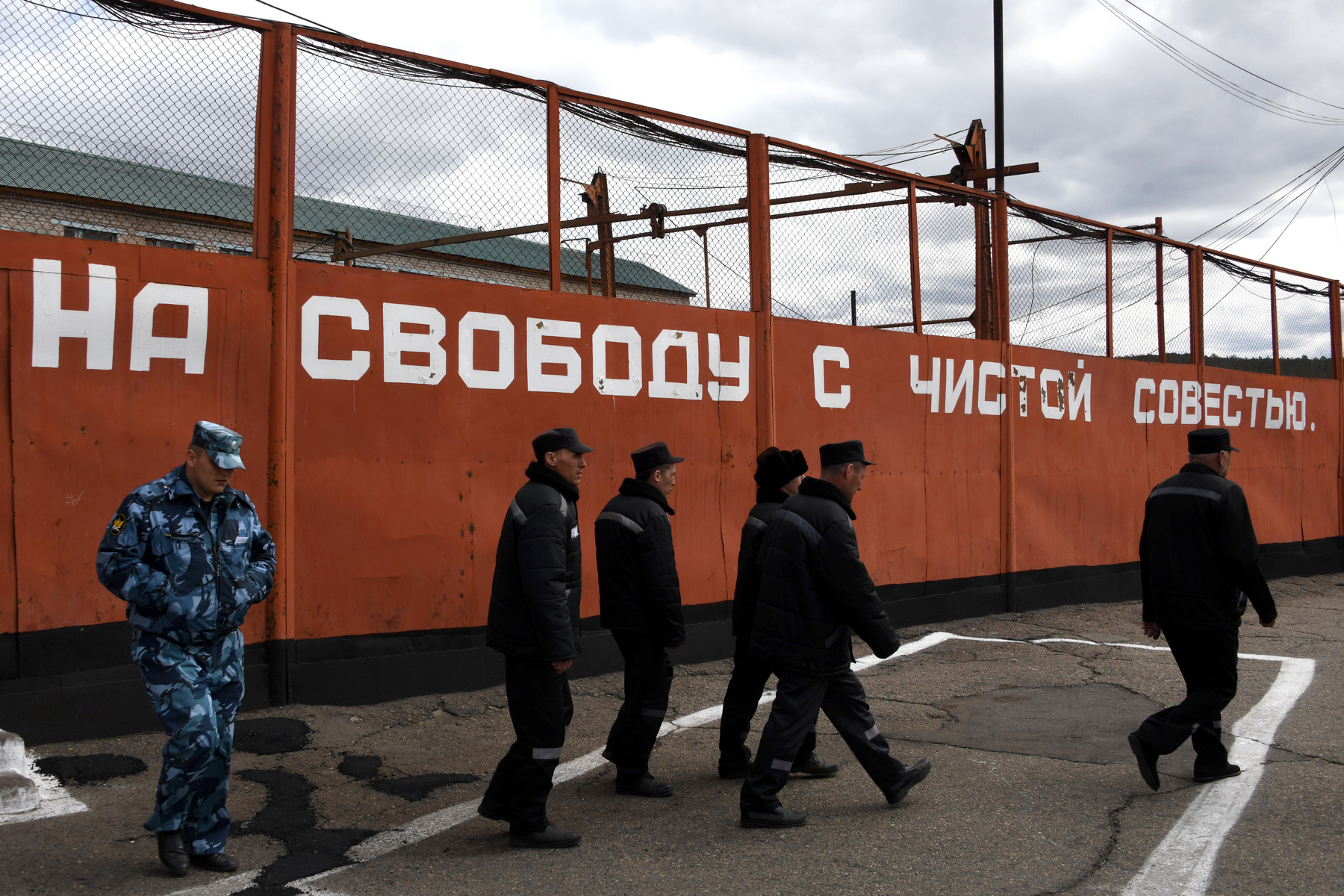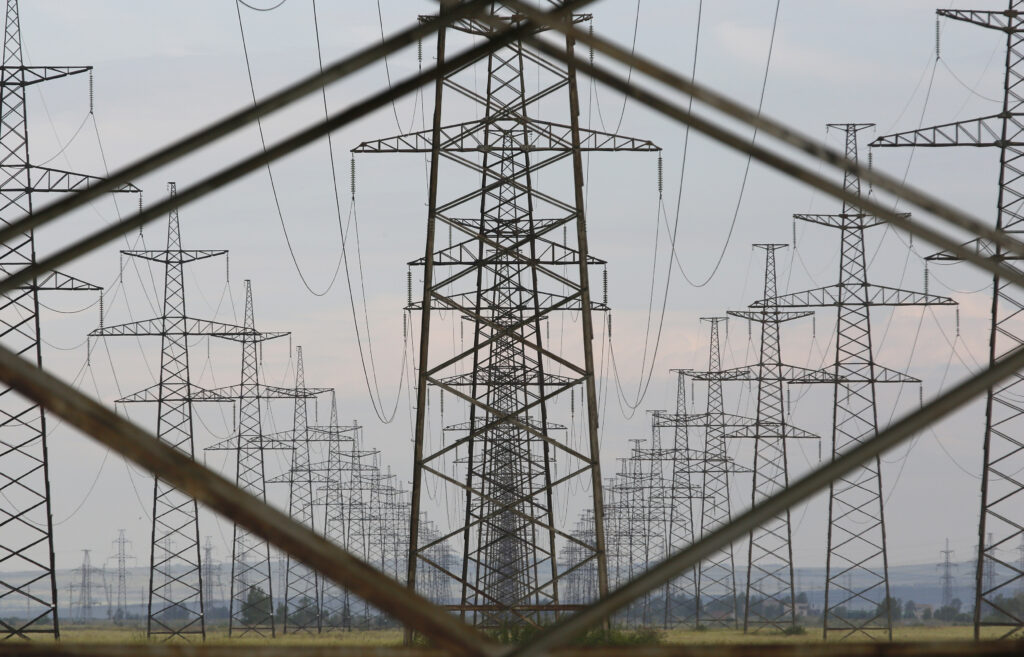Recently FSIN (the Russian Federal Corrections Service) revealed it was negotiating a contract with the Russian Railway Authority to deploy penal labour to work on the Baykal-Amur railway project. Strikingly, FSIN’s right to subcontract this sort of penal labour to private companies and other state agencies is in accordance with Russian law. It is an extension of the punishment of ‘forced labour as an alternative to deprivation of freedom’ (принудительные работы применяются как альтернатива лишению свободы) which was added under Federal Law F420-FZ to the criminal correction code on 7th December 2011.
The setting for this ‘new’ form of punishment appears to be intentionally provocative; the Baikal Amur Corrective Labor Camp, known as BAMLAG, was once the largest of the 1930s camps. At its height in 1938, it held 20% of all gulag prisoners. By that same year, it had accounted for 40,000 deaths, including 837 executions (see the gulagechoes blog).
Aleksander Kalashnikov, the director of the penitentiary service (FSIN), has insisted that conditions for today’s labourers will be quite different from those imprisoned in the Soviet era. It is reassuring to hear that FSIN is not openly planning to work people to death.
Forced labour as a form of punishment has deep roots in Russia. In 2019, FSIN celebrated its hundredth anniversary with a booklet describing its history from the foundation of the Bureau of Forced Labour by the Moscow City Soviet on May 7th 1919 (Буклет о 100-летии УИИ). Forced labour is usually presented as always having been an alternative sanction to imprisonment, although sometimes, as during the Second World War, having ‘carceral elements’. As the booklet explains, forced labour has helped solve a variety of problems: shortage of gulag guards, prison overcrowding, funding gaps, providing labour for dangerous work and so on. For most of the 20th century, it was labelled ‘correctional’ labour. Today, ‘forced’ labour is distinguished from ‘correctional’ labour because it confines the convicted offenders in special facilities known as correctional centres (Исправительные центры or ITs), whereas offenders sentenced to correctional labour remain at home.
The post-Soviet (re-)introduction of forced labour is associated with Justice Minister Aleksandr Konovalov’s attempt to break the domination of the Vory-v-Zakone in Russian penitentiaries by separating recidivists from first-time offenders. Konovalov raised a few eyebrows when in an Echo-Moskva interview (20th Jan 2010) he described the sentence of “forced labour used as an alternative to the deprivation of liberty” as analogous to Soviet-era khimea, and the ‘beneficiaries’ as khimiki. The current rationale, as explained by Aleksandr Kalashnikov the current FSIN Director, is to replace labour gaps left by the exodus of migrant labour. The possibility convicted offenders can fill a labour gap raises questions about Russia’s commitment to its ratification in January 2019 of the UN Protocol to the Forced Labour Convention of 1930. That does not seem to not trouble FSIN. Striking a more conciliatory tone, Elena Korobkova, head of the department responsible for non-carceral punishments (UOINIO), corrected her boss by explaining in a Tass interview that the aim of forced labour is not to replace migrant labour, but should be understood as a step towards the humanisation of punishment.
Ever since the BAM announcement, I have puzzled over what appears to me the essentially oxymoronic formulation of this ‘new’ penal sanction. ‘Forced labour used as an alternative to the deprivation of liberty’ does not fit comfortably with internationally accepted alternatives to incarceration, which as listed in the Tokyo rules, are non-institutional and allow the recipient of the sentence to live at home. The new sanction in Russia requires the recipients of a forced labour sentence to live in a facility that they are not allowed to quit. The majority of these are located on the territory of a correctional colony or are off-site facilities which can be built by FSIN, another state agency or private enterprise. At present there are 121 of both with a combined capacity for over 9000 people.
There are fewer restrictions on the freedom of twenty-first century khimiki than in colony-settlements, the next rung up on the penal ‘ladder.’ Even so, a sentence of forced labour does come with a serious deprivation of freedom of movement. Forced labourers must live in the FSIN facility and conform to regime rules, which include being inside the facility when not at work. Work hours include the transit time to and from the place of work as calculated by the ITs’s administration (spetskommanidtura). Forced labourers have no right to refuse the work contracted for them. If they do, they risk referral to court for (re)sentencing to a higher category facility. Residents must conform to a daily timetable, a model of which is shown in figure 1. Order is supposed to be maintained by light-touch supervision. However, it appears to require a large input of personnel. The prototype facility in Kazan, located on the site of a former juvenile colony, has 24 personnel for 240 residents, backed up by 60 cctv cameras. If khimiki wish to leave the facility other than for work (such as to shop for food), they must apply in writing to the governor. If they behave well, they can apply for weekend exeats or to live off-site with their family, as with some prisoners.
The GULAGECHOES project has been able to interview people serving out their sentences as forced labourers. All the interviewees had transferred from a high category facility. Overall, they were positive about the changes in their lives compared with the correctional colony in which they started their sentences. For most, the main advantage was that they could visit their family if they lived locally, after which permission to have ‘legal’ mobile phones and to make their own dietary choices figure in the positive comments. The principal complaint was that the transformation from prisoner to forced labourer wipes out a convict’s entitlement to apply for UDO.
The physical living arrangements effectively reproduce the collectivism of the correctional colony with accommodation typically in dormitories. Where these are on FSIN territory, they are usually re-purposed regular detachment-unit buildings. They are divided from the rest of the living zone of colonies in their own enclosure. Off-site correctional centres can be built de novo. In Moscow oblast, where there are three, each for 50 workers, they consist of two-storey buildings which, in addition to separate communal dormitories for women and men, contain a room for the receipt of parcels, a ‘sanitary-hygiene’ room, and an ‘education’ room. But they can also be prefabricated, modular barracks like those used by the military that can be easily moved to new locations as labour demand shifts. This is what is recommended for the Arctic correctional centres.
FSIN’s rejection of the opportunity to give forced labourers their own rooms allowing them some privacy and dignity, is an indication of where its priorities lie in the cost-benefit analysis of introducing the new punishment form. It is clear from one of our interviewees that the reproduction of the detachment-unit accommodation also reproduces the classic social order of the ‘society of captives’. While the division of residents into “red” and “black” is more muted than in the colony in which the interviewee was detained, the hierarchical social ordering, with outcasts or shunned (opushenye) at the bottom, has survived. None of our respondents complained about the material conditions of their forced accommodation. But most were habituated to communal living in the colony. The NGO Gulag-info, however, posted a complaint from a resident in Nizhnegorod oblast where khimiki had been placed in a converted sports hall and there were no windows or drinking water.
The kind of work contracted for forced labourers is largely menial. FSIN’s information booklet for potential partners identifies a broad range of activities suitable for penal labour from communal-housing services to the building sector. The sub-contractor is free from the trouble of writing individual contracts and is guaranteed a workforce that cannot leave and that is under ‘constant supervision’ by FSIN officers. The labour is, moreover, cheap and can be paid at the national minimum. As for the forced labourers, they have to pay an overhead tax of between 5 and 20%, plus any relevant state taxes. Our respondents were pleased to have the opportunity to earn money but they have no illusions about the work providing them with new skills training. It is doubtful that the work on BAM or FSIN’s other much publicised forced labour project – to clear up Arctic pollution – will contribute to the khimiki’s ‘social lift’.
I should make clear that I support any move in the direction of the development of milder forms of punishment in Russia. But I am suspicious of mislabelling. The compulsory daily routines, restrictions on mobility, living arrangements and militarised corps supervising compliance with regime rules together add up to the carceral character of the punishment of forced labour now being promoted by FSIN. What is being presented as an alternative to the deprivation of freedom quite clearly is nothing of the sort. It remains inherently custodial. In its main features, the correctional centre bears a strong resemblance to what are described in other jurisdictions as ‘open’, ‘minimum security’ or ‘low category’ prisons. In open prisons, prisoners can be released on license to work outside the prison, can apply for furloughs, and, when newly sentenced, they can make their own way to the facility. I suspect that FSIN knows this well. When challenged that the forced labourers are, de facto, prisoners, Elena Krobokova has no answer other than to repeat the tautology that “No, they are not prisoners: We are talking about people sentenced to forced labour as an alterantive to deprivation of freedom”. Further proof offered that ITs are not prisons is that they do not have watchtowers.
The interesting question is why FSIN is not naming this new form of sanction by its right name. It could be that it is part of the ongoing process of rehabilitating the gulag, which was founded on the principle of forced labour. But much of the explanation must lie with the audience FSIN is addressing. Since it joined the Council of Europe in 1996, the Russian Federation has had to respond to repeated criticisms of its penitentiary system. The classification of this ‘new’ form of punishment as an alternative to incarceration superficially helps to moderate Russia’s reputation as having the harshest prison regime in Europe. Firstly, it reduces the prison population at a single stroke. Currently, Russia vies with Turkey for top spot for the rate of imprisonment among Council of Europe states. In both countries imprisonment rates are 2/3rds higher than the average, and their imprisonment rates are 100 per 100,000 population higher than the state next rung down. If the 188,000 prisoners that Justice Minister, Konstanin Chuichenko, told Kommersant are entitled to apply for a transfer to a forced labour institution do so, this will bring Russia’s rate of imprisonment to below that of Georgia and Lithuania, placing it almost on a par with Poland. And it can achieve this without actually having to free anyone. Secondly, the classification of forced labour ‘as an alternative to custody’, shields ITs from the prying eyes of prisoner inspectors from the Committee for the Prevention of Torture and ONKs, and at the same time obviates the necessity of giving up the communal dormitory, to which FSIN has such a strong attachment.
Returning to the BAM project, Kalashnikov insists that it is only local convicts who will be sent to work on the line. The migrant labour they will replace is to double track the railroad, conduct tunneling, and rebuild stations on the line that have fallen into disrepair. It is hard to imagine what Kalshnikov has in mind by ‘local’ in the context of BAM’s 4324 kilometres route through some of the most sparsely populated parts of Siberian and the Far Eastern Federal Regions. But Kalashnikov says that families can move to where their loved ones are being rehabilitated through labour. By that token, we can add the 19th century Decemberists to the list of historical analogies used to describe FSIN’s latest ‘new idea’.










